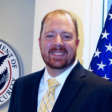
Insight By LookingGlass
Contextual intelligence in the cyber battlefield
Cybersecurity executives have moved from the conventional data center model to a cloud environment with data spread across the world.
Cybersecurity executives have an enormous responsibility. We have moved from the conventional data center model to a cloud environment with data spread across the world.
It used to be enough to protect an organization with some basic tools like local antiviruses and a perimeter firewall. Today, that has exploded into an arrangement of solutions like intrusion detection systems, intrusion prevention systems, network and host firewalls, security incident and event management tools, spam filtering, encryption in many of the solutions that need to be installed, integrated and managed.
The adoption of cloud technologies has also added a new level of complexity to the challenges faced by cybersecurity executives. Cloud and mobile technologies have them developing new ways to tackle these issues. Organizations need cybersecurity that provides complete visibility, intelligence, and the ability to scale to create a comprehensive view of the threat landscape. In this episode of CyberChat, we discussed how an organization matures, uses threat intelligence, creates a comprehensive view of its cybersecurity posture and employs contextual intelligence in the cyber battlefield.
Our guests were Shane Barney, chief information security officer for U.S. Citizenship and Immigration Services; Matt Smith, senior adviser to the CISO at the Department of Homeland Security; Greg Willshusen, director of Information Technology and Cybersecurity at the Government Accountability Office; and Alan Thompson, chief technology officer at Looking Glass.
When asked if it is harder to secure data today, all agreed. All admitted that the threat landscape is changing, so a defense can’t really be aimed at one threat or vulnerability, but needs to create a comprehensive view. Smith added that though the threat landscape is changing and becoming more advanced, “the [defense] capabilities are also advanc[ing] in defending the data.” Barney added that “[USCIS was] a heavily paper-based agency for a long, long, long time. Now we’ve made this huge leap into the electronic world and we’re still sort of adjusting to that.”
Willshusen stated that “the cloud is certainly an opportunity to help secure data that’s out there, but it’s also does not allow agencies to say, well, it’s a cloud service provider’s responsibility for securing information. It’s still up to the agency to make sure that the cloud service provider is adequately protecting that information.”
He also said that, “With respect to security we have found that the security over data at most of the agencies we go to needs to be dramatically improved … and it’s not just [the Government Accountability Office], it’s also the inspectors general at the various agencies, at least 18 out of the 24th CFO Act agencies, which are the major federal departments and agencies, um, site that their agencies’ information security program is not effective.”
The panel agreed that any modern program must take a holistic approach, but also felt that the staff was a huge part of any cybersecurity posture. Barney stated that “involves getting the right people in the right places with the right knowledge and the right skills because that’s what’s gonna drive that [holistic approach].”
Thomson stated, “I would say finding experienced people in security is actually probably always going to be a challenge. So, making those individuals that you do have a more effective, a more efficient, to enable the achievement of the objectives of a security organization.” He discussed how we get to threat intelligence. “There’s a lot of things that can go into threat intelligence. Ultimately, it’s about data that can be used to help protect the organization. So, there’s no shortage of data. I think the key challenges is what data is relevant to securing your organization. So, for example, how can intelligence make that data more effective and more useful in your organization? So, it could be as simple as what type of actors are performing, certain types of campaigns, certain behaviors that ultimately can help inform or instruct your response to those aspects.”
Thomson also stated that “intelligence can be considered a much broader aspect in that informs you about your organization as a whole … There’s many different aspects of intelligence, but fundamentally it’s about focusing your defensive efforts based on what that intelligence tells you.”
Smith brought a great point to the conversation — that he valued threat intelligence but wanted to discuss risk scores and a need for a better understanding of what data was used to create that risk score. When discussing a risk score of eight, for example, he said, “What does the eight mean? Depends wildly on who your provider is, but the challenge that we have with that in operationalizing it is that what we really need?”
He also said there was plenty of data.
“But in order for me to contextualize that eight in my environment, I really need the bit of data that went into calculating that eight. And there’s some trade secret challenges in exposing that that we haven’t figured out how to overcome,” he said. “But if I had those data elements and could put that in context of my own data and my own analysis, then I can start identifying whether there’s a threat to systems at the southern border, or whether there’s a threat to a particular executive that I have, or whether there’s a threat to a location at a time that I might know that we’ve got either a particularly sensitive event going to be happening, or you know, particularly impactful travel that’s going to be happening.”
Copyright © 2024 Federal News Network. All rights reserved. This website is not intended for users located within the European Economic Area.
Related Stories

DOGE leaders seek telework rollback, but agencies say it improves retention

House GOP setting up DOGE subcommittee to address ‘wasteful’ federal spending
Panel of experts
-

Shane Barney
Chief Information Security Officer, U.S. Citizenship and Immigration Services
-

Matt Smith
Senior Advisor to the Chief Information Security Officer, Department of Homeland Security
-

Gregory Wilshusen
Director, Information Technology and Cybersecurity, Government Accountability Office
-

Allan Thomson
Chief Technology Officer, LookingGlass
-

Sean Kelley
Host of Cyber Chat, Federal News Network
Upcoming Events
Related Stories
Top Stories

Shane Barney
Chief Information Security Officer, U.S. Citizenship and Immigration Services
Shane Barney is the U.S. Citizenship & Immigration Services (USCIS) Chief, Information Security Division (ISD) and the Chief Information Security Officer (CISO). In this role, he manages USCIS’s next generation Information Technology Security program responsible for ensuring the confidentiality, integrity, and availability of USCIS networks, systems, and information, protection from both internal and external threats, as well as the implementation of the information security program and policies for the agency.
Before accepting the CISO position, Shane served as the Deputy ISD Chief and Deputy CISO and has been Acting CISO since April 2018.
Prior to Shane’s roll as ISD Deputy, he was the Chief of the Cyber Intelligence Branch within ISD overseeing the classified operations, communication security, insider threat, and forensic programs for USCIS. Before joining the federal workforce, he worked as a contractor for USCIS first in the Contracting Office in Vermont and then with the Office of Security and Integrity in Washington, D.C. As a contractor, Shane helping to charter the technical direction for the intelligence and fraud/risk detection missions on the classified networks. He developed analytical tools, data requirements, and system access needs in support of these missions.
Shane holds two Master’s Degrees and a Bachelor Degree all from the University of Vermont.

Matt Smith
Senior Advisor to the Chief Information Security Officer, Department of Homeland Security
Matthew Smith is the Director of Cybersecurity Solutions for the U.S. Department of Homeland Security (DHS). In his role working for the DHS Chief Information Security Officer (CISO), Mr. Smith is responsible for the security architecture, security engineering, and cloud security analysis for the Department enterprise services and Headquarters Component. Mr. Smith is also the Technical Representative of the DHS CIO as FedRAMP Joint Authorization Board member and has been working with his counterparts at the Department of Defense and the General Services Administration to govern secure Federal use of cloud computing. He lead the deployment and integration of Continuous Diagnostics and Mitigations as well as the transformation of the Enterprise Security Operations Center at DHS. Mr. Smith has 20 years of experience in security, operations, and development across industry, academia, and government.

Gregory Wilshusen
Director, Information Technology and Cybersecurity, Government Accountability Office
Gregory C. Wilshusen is a Director in GAO’s Information Technology and Cybersecurity team. He oversees information security issues and leads cybersecurity and privacy-related studies and audits of the federal government and national critical infrastructure.
Greg joined GAO in 1997. Prior to joining GAO, he served as the controller for the North Carolina Department of Environment, Health, and Natural Resources, and held senior auditing positions at Irving Burton Associates, Inc. and the U.S. Army Audit Agency. He is a certified ethical hacker, certified information systems auditor, and licensed certified public accountant.
Greg earned a master’s degree in information management from George Washington University’s School of Engineering & Applied Science and a bachelor’s degree in business administration (accounting) from the University of Missouri. He was a senior executive fellow at the John F. Kennedy School of Government at Harvard University.

Allan Thomson
Chief Technology Officer, LookingGlass
As LookingGlass Chief Technology Officer, Allan Thomson has more than three decades of experience across network, security, and distributed systems technologies. Allan leads technical and architecture strategy across the LookingGlass solutions portfolio.
Prior to LookingGlass, Allan served as Principal Engineer at Cisco Systems, Inc., where he led the software architecture and design of the company’s Cyber Threat Defense System and Platform Exchange Grid. He was responsible for overall systems management and security telemetry collection/aggregation, as well as distributed threat analysis/intelligence services in multi-tenant public and private cloud deployments.
Before joining Cisco, Allan oversaw the technology growth initiatives of several start-up companies, including Airespace, where he was a Software Architect responsible for the design, development and network management/location tracking of the company’s wireless local area network (WLAN) system.

Sean Kelley
Host of Cyber Chat, Federal News Network
Mr. Sean W. Kelley is a former member of the Senior Executive Service and has over 27 years of IT experience in the federal and private sector. Prior to joining the Federal Government in 2012 (Department of Veteran Affairs & Environmental Protection Agency), he held positions as an Independent Consultant with numerous Healthcare IT Companies. He also served in a variety of key IT positions within the Navy Medicine including the CIO for the United States Naval Ship (USNS) Comfort during Disaster Relief for the Haitian Earthquake; the CIO for Navy Medicine Corporate Headquarters; the Director for the Navy Medicine Enterprise IT Program Management Office and as an IT Manager for the Attending Physician to Congress (OAP).
Mr. Kelley has experience in information technology and cybersecurity with a focus on developing strategic planning to achieve business goals. Mr. Kelley is a contributing author for the Computer Security Handbook in Security Policy and the VA’s Cyber Security Strategy White Paper for the White House and Congress that led to the VA’s Multi-Million Dollar Cybersecurity Strategy. Mr. Kelley has taught cyber security at the Master’s, and Bachelor Degree level and was a highly regarded SANS Institute On-Demand Instructor and course author. Mr. Kelley was recently named to the “FedHealthIT100 which honors those individuals recognized for driving change and advancement in the Federal Health Information Technology Market.”
Mr. Kelley has a B.S. in Healthcare Management from Southern Illinois University, a M.A. in Computer Resource and Information Management from Webster University, and a M.S. in Information Technology Management from the Naval Postgraduate School in Monterey, CA with a focus in networking and information assurance. Mr. Kelley studied at the Naval Postgraduate School’s Center for Information Systems Security Studies and Research (CISR). “CISR is America's foremost center for defense-related research and education in software security, Inherently Trustworthy Systems (ITC), Cybersecurity Defense, and the use of computational systems in Cyber Operations”. Mr. Kelley is a Certified Information Systems Security Professional (CISSP) and a Project Management Professional (PMP). Mr. Kelley is also an ICIT Fellow. Members of the ICIT Fellows Program are part of an elite group of experts who are leading the industry with cutting-edge innovation, thought leadership, and advanced technologies.



